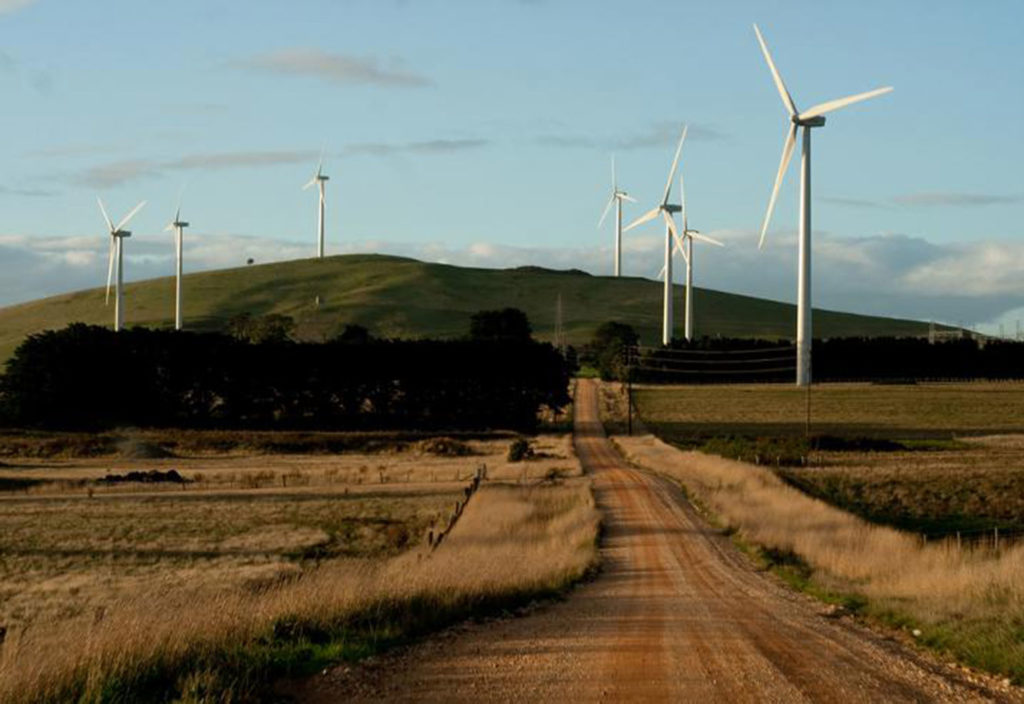The Berrybank Wind Farm in Western Victoria is using locally manufactured turbine components to help Victoria reach 50 per cent renewable generation by 2030.
The $276 million, 43-turbine project will produce 180 MW, which the Victorian government has said will be enough to power around 138,000 homes when it becomes operational in late 2020.
“This is an exciting next step in driving down energy prices, reducing carbon emissions and creating jobs as we work towards our renewable energy target of 50 per cent by 2030,” said Victorian Energy Minister Lily D’Ambrosio.
What sets the project apart is the decision to use 64 per cent locally manufactured content, including turbine parts and hubs manufactured at the Vestas Renewable Energy Hub in Geelong – located on the site of the former Ford car factory.
This facility has ended a 10-year drought in local wind turbine assembly work in Australia. Turbines manufactured in Geelong are also expected to be used in the 336 MW Dundonnell Wind Farm in Western Victoria. This 80-turbine project started construction in January and is also expected to be operational late next year.
Future renewable energy maintainers will also benefit from the Berrybank project, with Ballarat-based Federation University set to train wind turbine technicians at the site.
Seagulls inspire local innovation
While there has been a lot of research into how best to optimise the design of large-scale turbines for wind farms like Berrybank and Dundonnell, there has been less focus on small-scale wind turbines.
Large-scale turbine blades lose aerodynamic efficiency when scaled down. One solution that is being investigated is the suitability of a seagull wing-shaped airfoil to improve the performance of smaller wind turbines, as wind viscosity affects smaller blades more than their larger counterparts.
Researchers at Deakin University’s School of Engineering have recently designed a seagull-inspired wind turbine blade, which they claim boosts small-scale turbine generation capacity by 10 to 15 per cent.
Senior mechanical engineering lecturer Dr Jorg Schluter said small-scale turbines could be suitable for renewable generation in rural and remote areas.
“Small-scale wind turbines can operate as single generating systems on buildings and small sites much like the traditional farmhouse windmill that pumps water,” he explained.
Schluter added that these turbines could operate in tandem with rooftop solar panels to take advantage of seasonal variations in sun and wind.
Exciting development
Arun Joseph Thomas, a Masters student at Deakin University, used simulation and analysis software, combined with wind data from the Geelong area in Western Victoria, to demonstrate that the seagull-inspired blade could deliver up to 15 per cent more wind power than conventional designs.
“The curvature of their wings has been optimised over millions of years to extract the most out of the air at these smaller scales,” Thomas said.
Thomas added that the efficiency gained by integrating a seagull wing-shaped airfoil into blade design could increase the commercial viability of small-scale wind turbines.
Schluter – who already holds a patent for a delta wing fluid turbine that can be used in small-scale wind projects – said the seagull wing design was an exciting development in the ongoing effort to improve efficiency and capability in the field.
